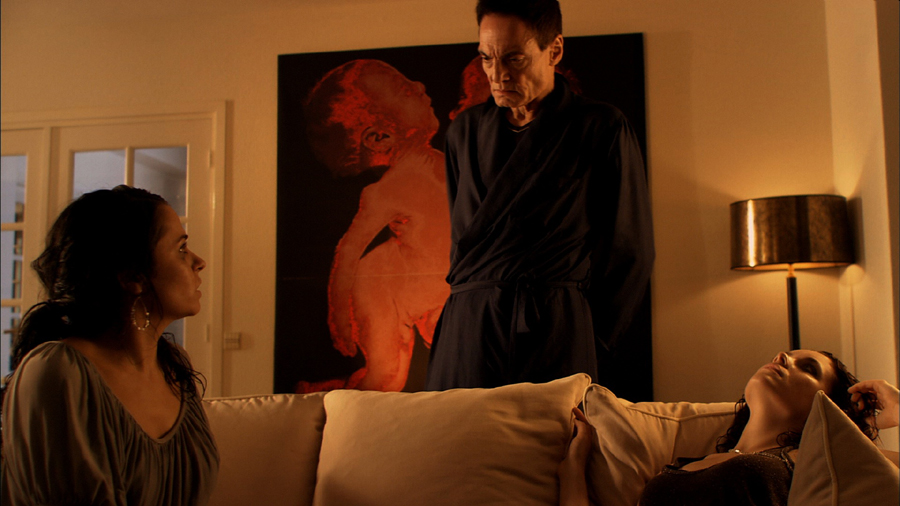
The Human Centipede (First Sequence)
Directed by Tom Six
For a movie whose entire premise is more or less spelled out in its title, The Human Centipede is a surprisingly elusive proposition. Despite the sordid particulars, Tom Six’s debut is emphatically not a horror film, at least not in the modern sense. It rejects all notions of camp, shuns aesthetic excess and genre tropes, and rarely even attempts to supply even low-level suspense. It’s really a particularly depraved and profoundly unpleasant high-concept art movie, and a prolonged slap in the face to anyone who thought its sickening concept might make for a good time at the movies.
The film opens inauspiciously, with renowned surgeon Hieter (Dieter Laser) selecting his victims – two of whom, a pair of hapless American tourists (Ashlynn Yennie and Ashley C. Williams), make his job easy by stumbling upon his massive home after, of course, their car breaks down (one of the movie’s few stock plot points) – and restraining them in his basement. In its early scenes, the film establishes its plain-faced approach: little music, steady, fluid camera movement, and no attempts at comic relief or pop-culture cool. When Laser outlines his surgical dream to his unwilling subjects, neither he nor the film takes a moment to observe his screaming captives’ protests – aside from a deliberately half-hearted third-act development, the film’s only setting is “inevitable.”
Another key to the film’s surprisingly straightforward, unembellished execution (besides its relatively low levels of violence and gore) is an almost-completely humorless and deeply unsettling performance courtesy of Laser, who plays the mad doctor as a simple manifestation of pure, unchecked malevolence and misanthropy. He is meant to be one of Germany’s foremost surgeons, a figure who commands respect – a fact that lends the stomach-churning proceedings of the film’s entire back half a distinctly fascistic air. Hieter is a more recognizably “human” villain than most modern horror provides – he is blessed with no superhuman strength, cunning intellect, labyrinthine scheming, or even a penchant for ranting – and his uncomplicated misanthropy matches the film’s startling lack of genre signposts. Yes, he cackles evilly when he looks upon his abomination after its completion (and makes the abomination look back at itself), but that’s more or less the only time Six lets even Hieter actually seem to derive enjoyment out of the proceedings.
The Human Centipede is seemingly designed to be an entertainment vacuum, neither to be enjoyed nor dissected – the fact that it has produced a significant following among “torture porn” fans is more a sign of the degree to which people will seek out depraved material than it is a reflection on the film itself. (That fact is also a far more damning indictment of depravity addicts than any Michael Haneke diatribe.) Watching it will not enrich any part of your existence, but there is something admirable about Six’s almost complete lack of pretense. Midway through the film, in one of the few moments that suggests any possible subtext, Laser presses his booted foot against the face of the centipede’s rebellious “lead,” Katsuro (Akihiro Kitamura), beginning the slow erosion of his self-regard; it’s an act that instantly conjures thoughts of Orwell, and also provides a handy image to summarize the film’s approach: no cat-and-mouse, no elaborate traps, no cheap scares (or any scares, really), no grinning antihero – just a boot stamping on a human face, forever – or at least for 90 minutes.
Simon Howell

